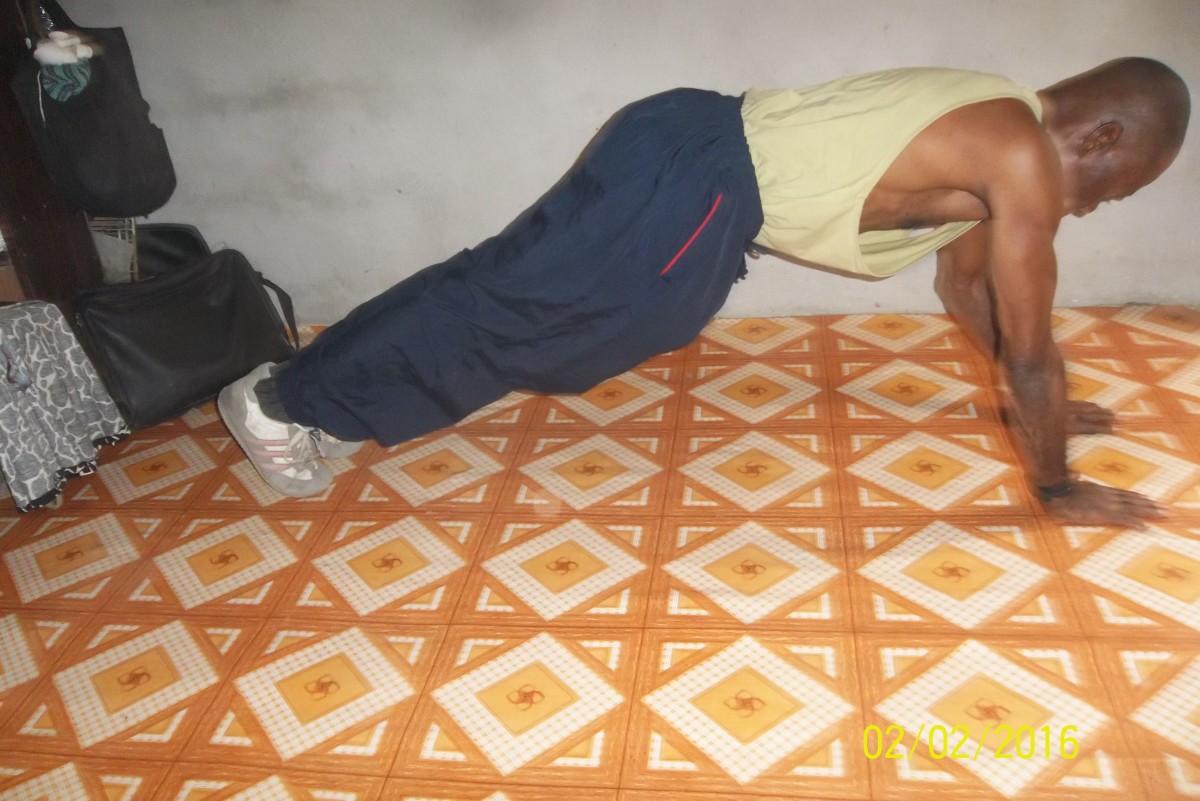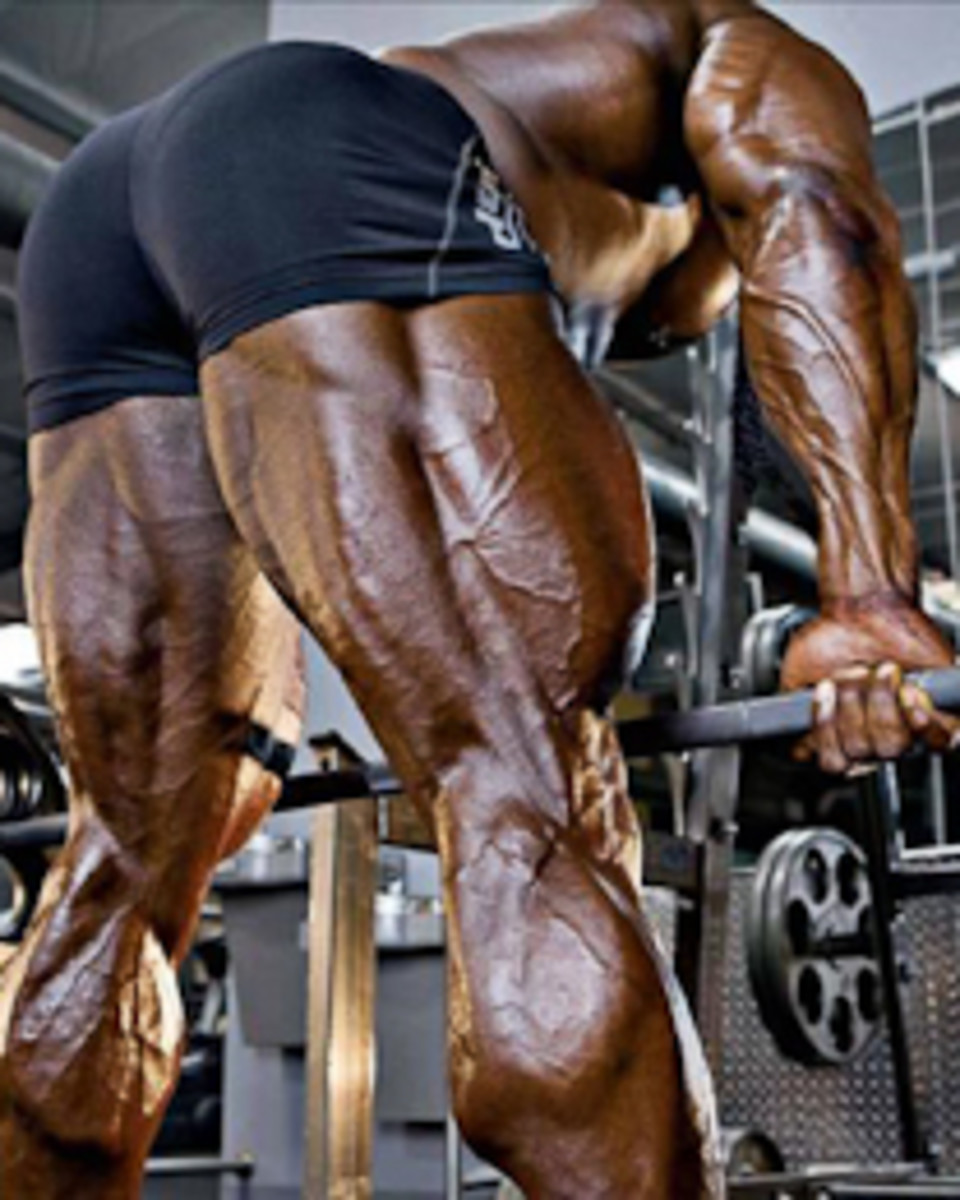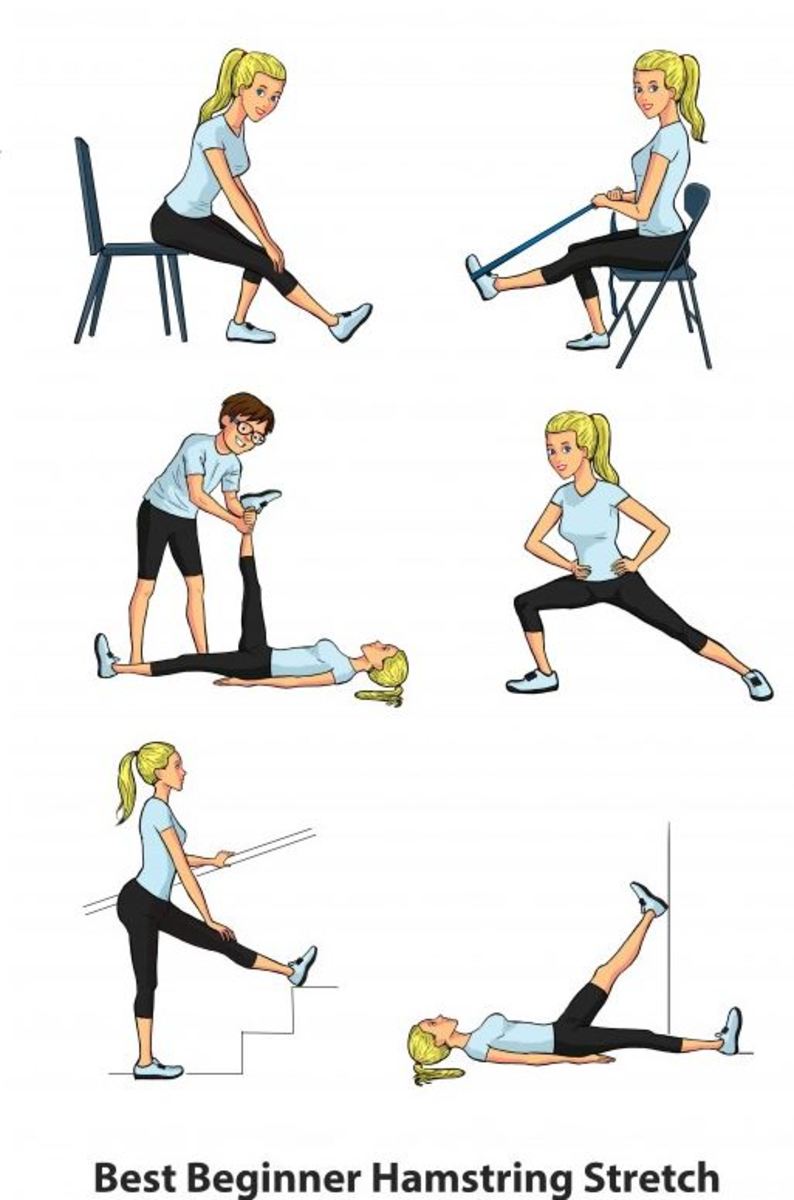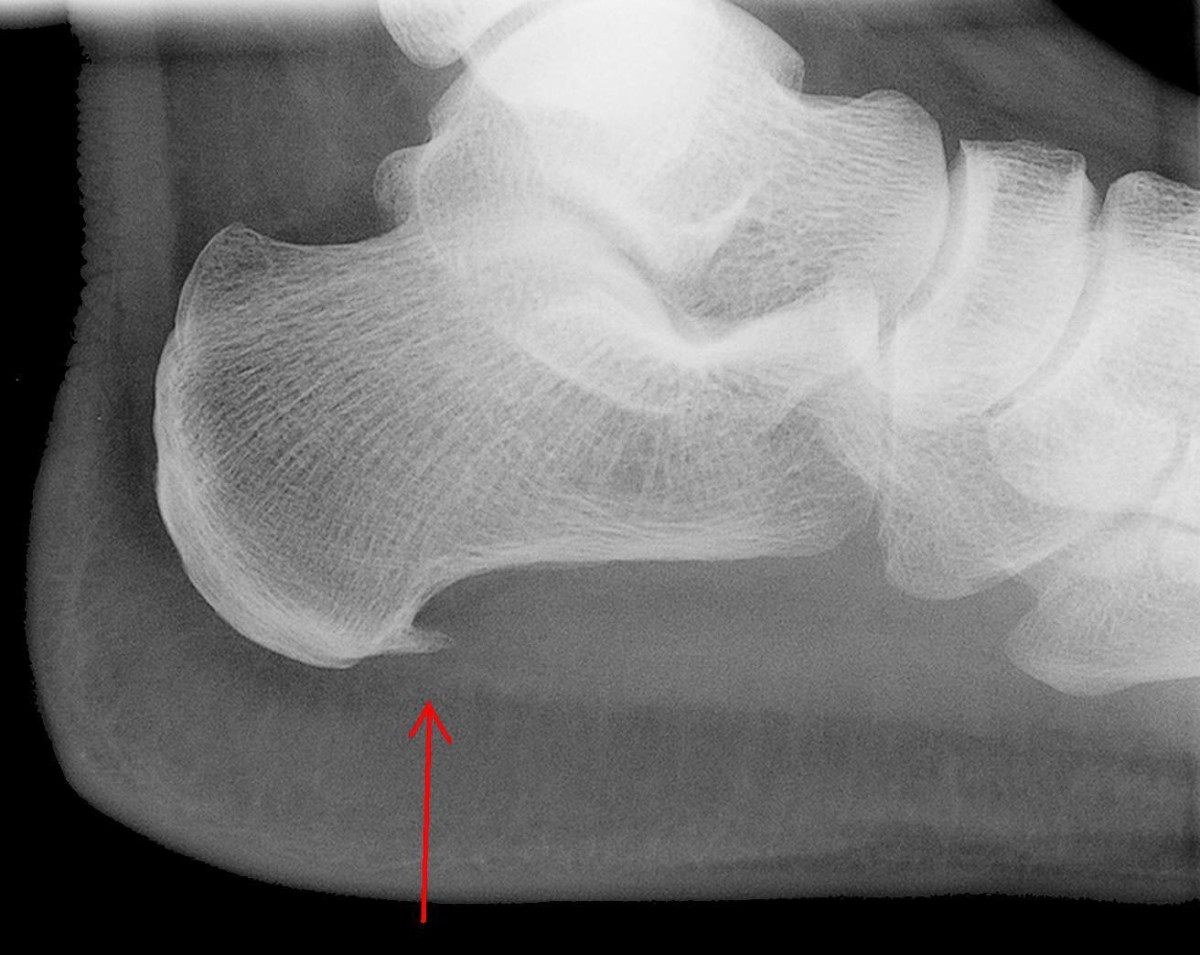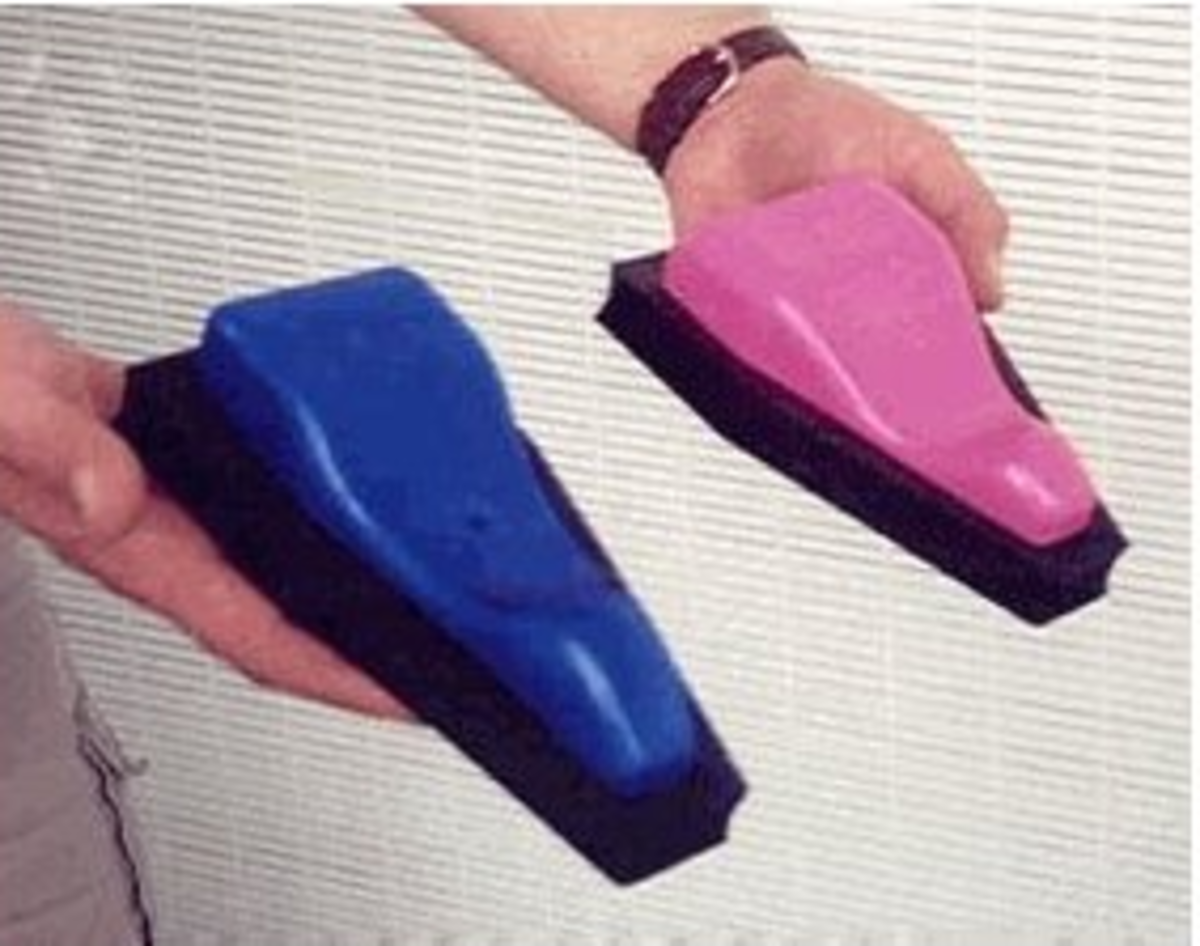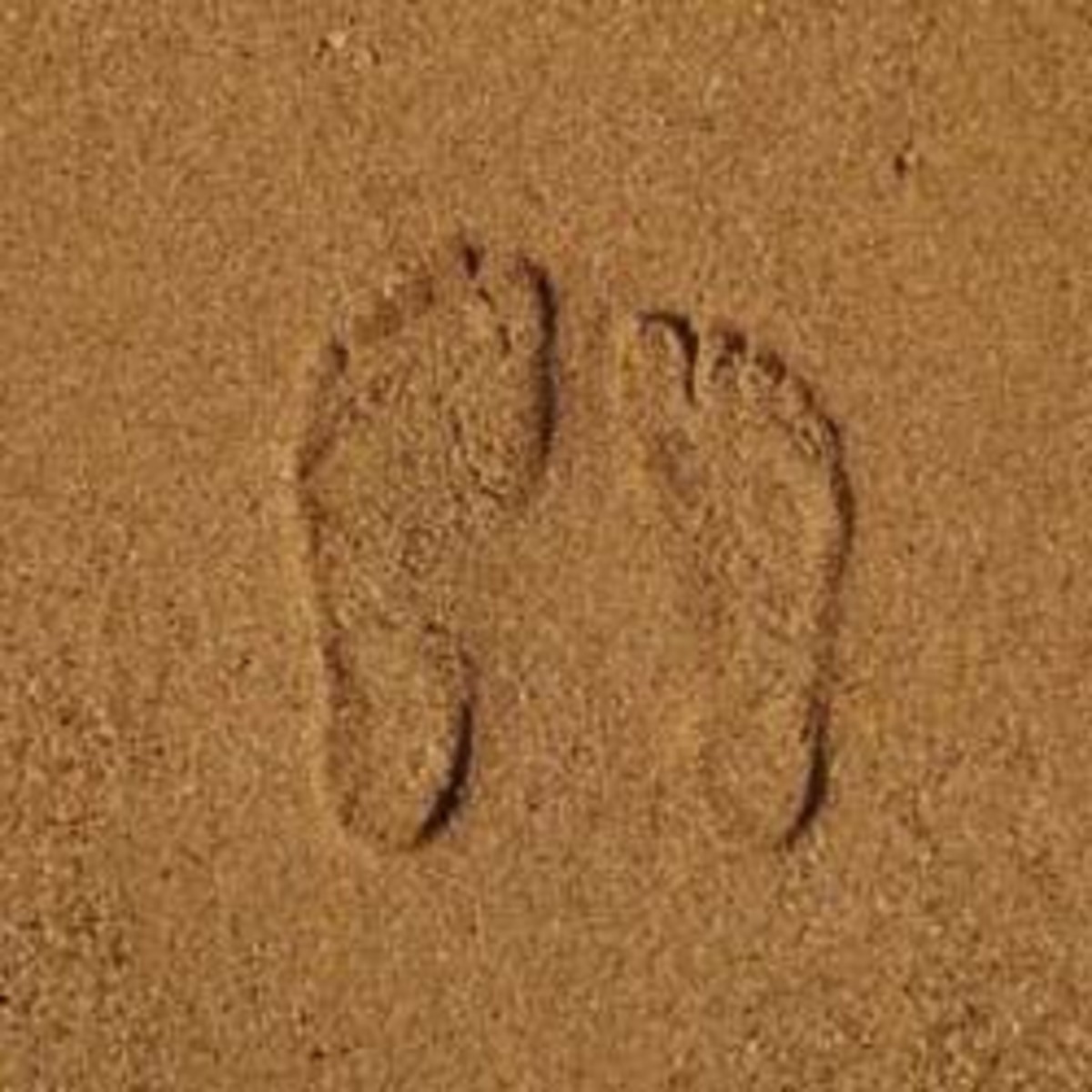Back Pain: Home Managements #8 - Heel-Cord stretching exercise
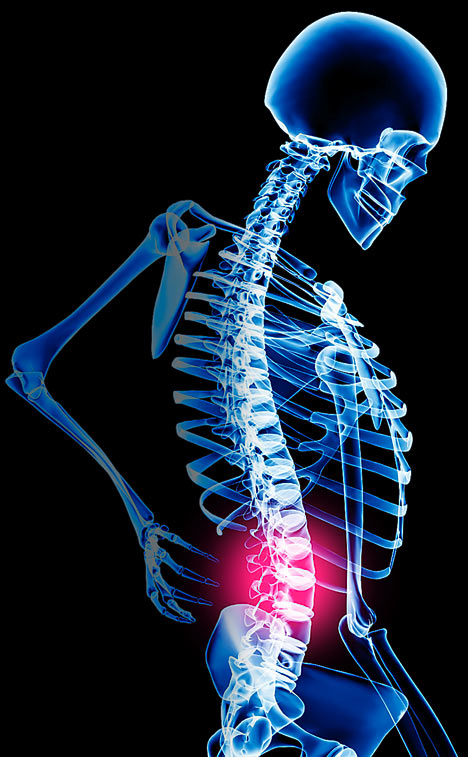
Introduction
The tightness of the Heel – Cord also contribute, to a great extent, to the low back pain. To understand the mechanism which is responsible for this phenomenon, one must be aware of a brief anatomy of the posterior compartment of the thigh (the Hamstring Muscle ) and the posterior compartment of the leg (the Calf Muscles ).
Anatomy of the Back of the Thigh (Muscles)
The muscles of the back of the thigh are called the Hamstring Muscles. They are four in number. They are the Semitendinosus, the Semimembranosus, the long head of the Biceps Femoris and the ischial head of the Adductor Magnus. These muscles arise in the gluteal region (ischial tuberosity ) and get inserted into one of the bones of the leg. Of the four muscles, the Adductor Magnus reaches only up to the Adductor Tubercle of the femor. But it is also considered as one of the muscles of the Hamstrings because the Tibial Collateral Ligament of the knee joint is, morphologically, the degenerated tendon of this muscle.
Comments:- From the above discussion it is clear that the Hamstring Muscles are two joint muscles (the hip and the knee joints) and their main functions are the extension of the hip joint and the flexion of the knee joint. The tightness of the Hamstring Muscles exert severe strain at the low back and causes severe low back pain (Hamstring Stretching Exercises – discussed earlier-“ How to Take Care of Your Back – Hamstring Stretching Exercises”).
Anatomy of the Back of the Leg (Muscles)
The Superficial Muscles of the back of the leg are the Gastrocnemius, the Soleus and the Plantaris. The Gastrocnemius is a powerful muscle which has two heads, the medial head and the lateral head. The medial head take origin from the medial condyle of femor and the lateral head originates from the lateral condyles. The Soleus lies deep to Gastrocnemius. It originates from both the bones of the leg (the Tibia and the Fibula). The tendon of the Gastrocnemius muscle fuses with the tendon of the Soleus to form the Tendo Calcaneus or Tendo Achilles. This tendon gets inserted at the posterior surface of the Calcaneum. The Plantaris originates from lateral condyle of femor. Its long tendon crosses from lateral side to medial side and get inserted in to the Calcaneum through the Tendo Calcaneum Tendon.
Comments :- From the above discussion it is clear that the Gastrosoleus Muscle (the Gastrocnemius and the Soleus) is a two joint muscle (the knee and the ankle) and its main functions are the flexion of the knee joint and the plantar flexion of the ankle joint. From the anatomical analysis, it is clear that the Hamstring Muscles as well as the Gastrosoleus Muscles pass through the posterior aspect of the knee joint. Both these muscles cause flexion movement at the knee joint. From this it is clear that the tight Tendo Achilles tendon places excess strain and stress on the Hamstrings and ultimately this strain is transmitted to the lumbosacral spine causing low back pain while bending forward. It is also found that most of the patients who have heel-cord tightness also have Hamstring tightness. Hence heel-cord can be stretched simultaneously with Hamstring stretching exercises. Bilateral heel-cord tightness causes lumbosacral strain. Unilateral heel-cord tightness causes asymmetry, pelvic rotation and lateral flexion.
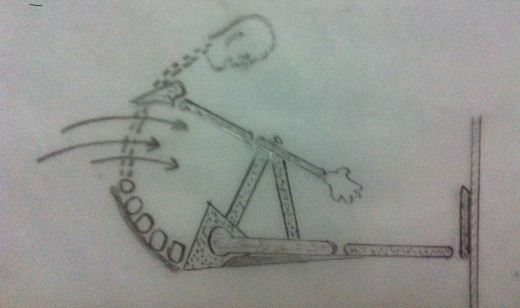
1. Heel-Cord Stretching Exercise(along with Hamstring Stretching)
When restrictive heel-cords are found to impair body mechanics, they may be stretched during the course of the “Protective Hamstring Stretching Exercise” by merely placing the ankle at 90⁰ so that the sole of the foot of the extended leg is flat against the wall. The bouncing action which stretches the Hamstrings will simultaneously stretch the heel-cord also. Hold in this stretched position for 5 seconds. Repeat the exercise with the other leg. The whole exercise programme may be repeated for 10 times. (“Protective Hamstring Stretching Exercises” discussed earlier. Refer “How to take care of your back- Home Programme- Hamstring Stretching Exercises”).
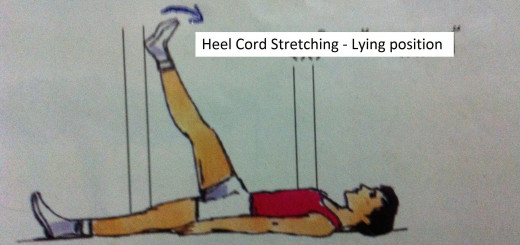
2. Heel –Cord Stretching Exercise (along with Hamstring Stretching)- Supine Lying.
Lie supine with your buttocks close to a doorway. Keep both the legs straight. Keep one leg flat on the floor, raise the other extended leg and rest it on the doorway. Slide this leg up the doorway till a stretch is felt behind the thigh. Keeping this leg in this stretched position, take the foot backwards (dorsiflexion of the foot) till a stretch is felt in the Calf Muscles. Hold the foot in the maximum stretched position for 5 seconds. Slowly bring it back to the starting position. Repeat the exercise with the other leg. The whole exercise programme may be repeated for 10 times. This exercise stretches the Hamstrings and the Heel-Cord simultaneously.
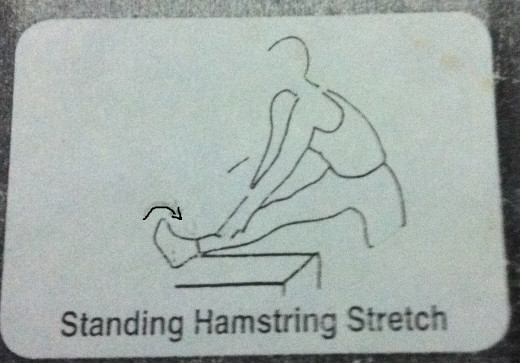
3. Heel-Cord Stretching Exercise (along with Hamstring Stretching) -standing
Heel-cord may be stretched during the course of the Hamstring Stretching Exercise which is done in a standing position. (Hamstring Stretching Exercise in the standing position is already discussed. Refer ”How to take care of your low back- Home Programme- Hamstring Stretching Exercises- Standing Position”). Once the maximum stretch is felt behind the thigh, take the foot backwards (dorsiflexion of the foot) until a stretch is felt in the Calf Muscles. Hold in this maximum stretched position for 5 seconds. Slowly bring it back to the starting position. Repeat the exercise with the other leg. The whole exercise programme may be repeated for 10 times. This exercise stretches the Hamstrings and the Heel-Cord simultaneously.
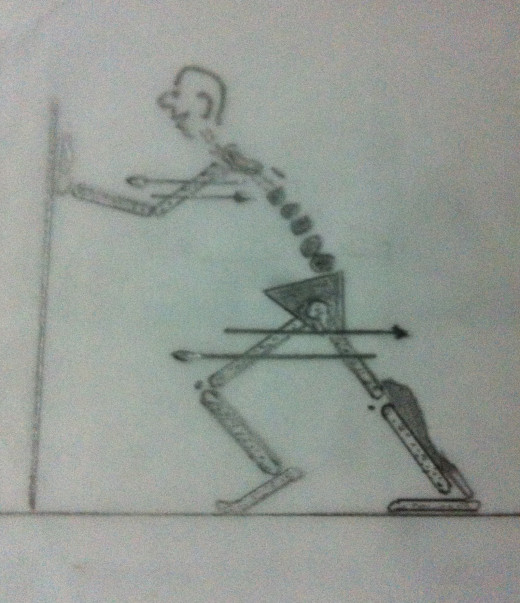
4. Heel-Cord Stretching Exercise
The Heel-Cords may be stretched when the patient stands erect, but leans forward against a wall. The patient stands few feet away from the wall and bends forward until the palms of his hands rest against the wall. In this position the body of the patient leans at an angle to the wall. But he balances himself on both feet and rests on both palms. Once in this position, the patient steps forward halfway to the wall with one foot. He keeps his other leg extended at the knee with the heel flat firmly on the ground. The patient then flexes rhythmically the forward leg at the knee. Flexing the arms at regular intervals allows a total back-and forth movement of the entire body. But, all the time, the rear heel must be flat on the floor. This way Heel-Cord can be stretched. The lumbar spine must be prevented from arching. A flat back must be maintained throughout. Repeat the exercise with the other leg.
The whole exercise programme may be repeated for 10 times.
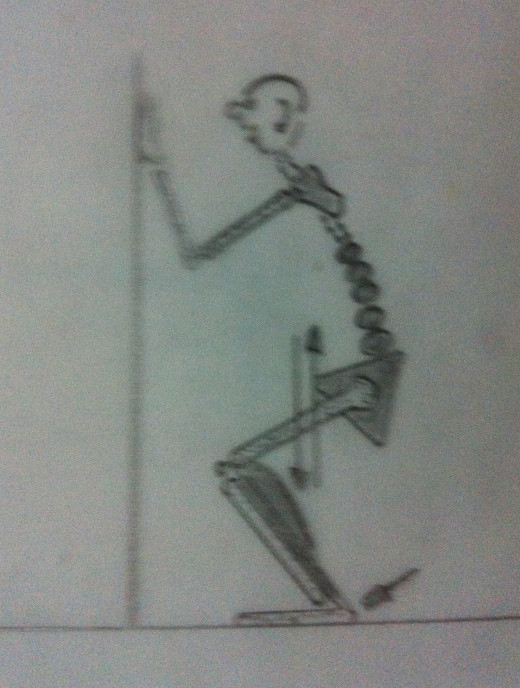
5. Heel-Cord Stretching Exercise-Both Cords Simultaneously
This exercise appears to be simple. But this cannot be done by everyone. The person squats as if he intends to sit on his heels, keeping both his feet slightly turned outwards and several inches apart. Both the heels must be kept flat on the floor. Use of the soles of the feet or toes must be avoided. The stretching motion is a rhythmic up-and-down bouncing movement. The patient may maintain his balance by supporting from a chair or a wall. This exercise stretches both the cords simultaneously.


